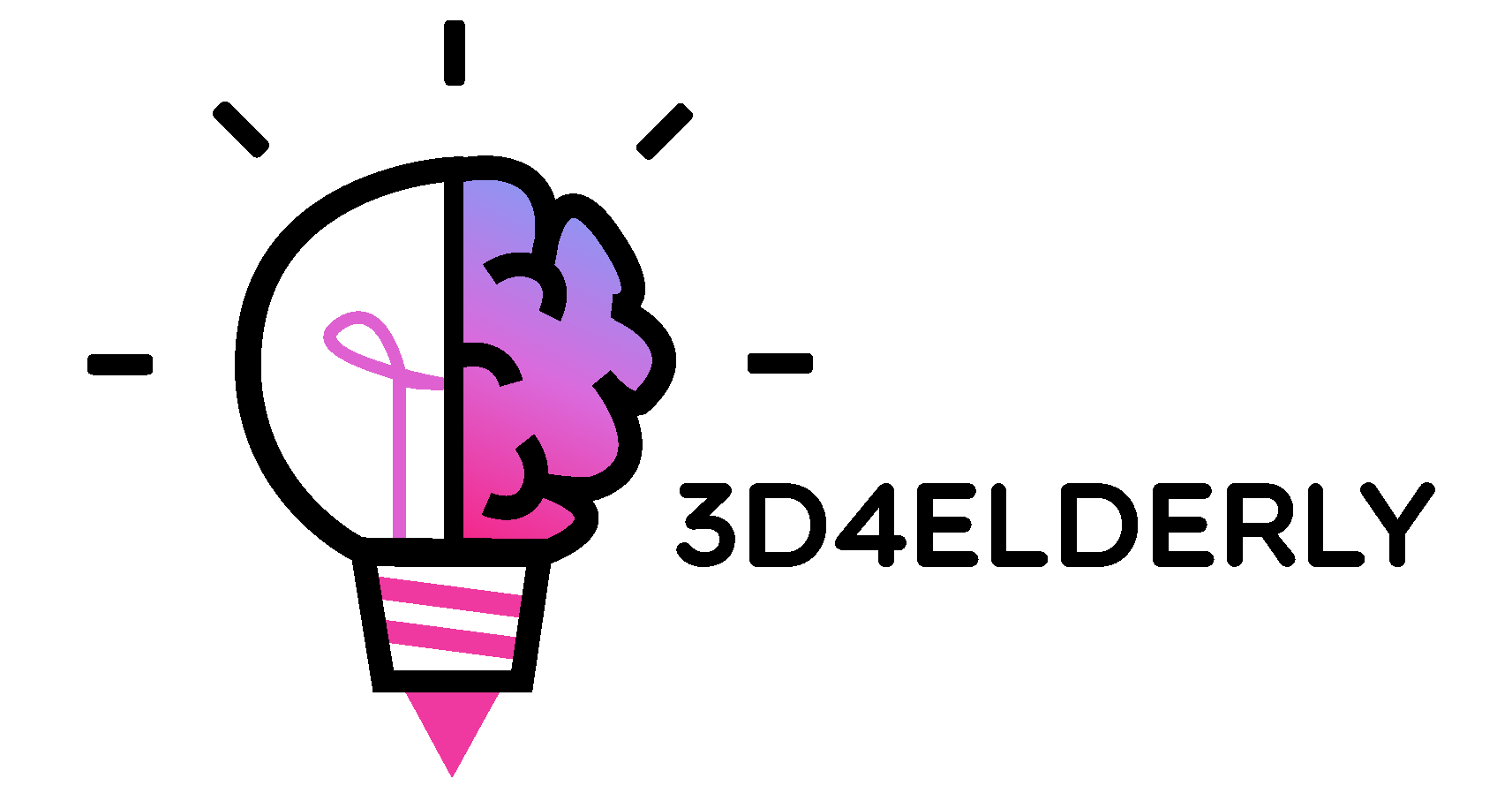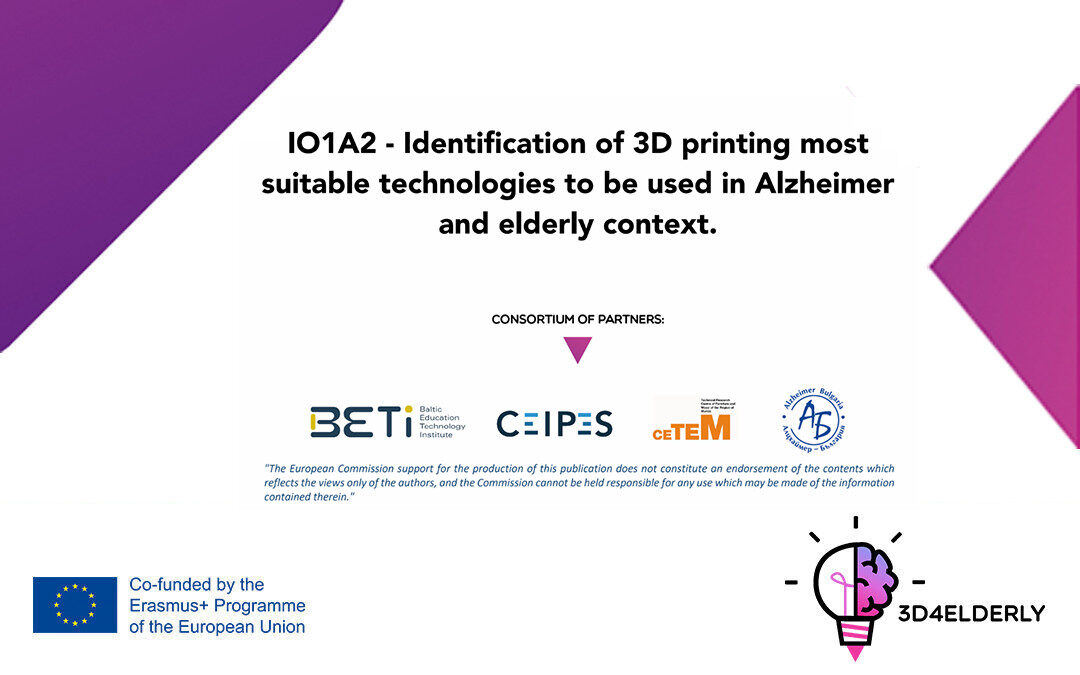This consortium is happy to announce that the 2nd guideline realised by the CETEM partner with the collaboration of the other partners is now available.
IO1- A2 “Identification of 3D printing technologies to be used in Alzheimer and elderly context” is an important tool for the staff (trainers, caregivers, family members etc.) that are dealing with people with dementia and Alzheimer’s disease, in order to understand the criteria to be taken into consideration to choose the right type of 3D printer.
It is needed to understand how accurate a 3D printing technology really is, what are the costs related to this technology, the complexity of use, application areas, examples, etc. The result of this analysis is given in this guideline between three different 3D printing technologies, which are: Fused Deposition Modelling (FMD), Stereolithography (SLA), Selecting Laser Sintering (SLS).
The guideline of 3D4ELDERLY project aims, among other things, to train caregivers and staff working with people with Alzheimer’s and dementia on how to use a 3D printer and what are the main types of technologies available on the market. To this end, identifying the most suitable and best technologies for them is therefore essential and requires special attention: process and overview, machines and materials, build size, accuracy and costs.
At the end of the guideline, it is explained about the benefits of Fused Deposition Modelling (FDM), and why this technology should be identified as the most suitable one for 3D4ELDERLY project purposes.
So, the main reasons and also advantages of FDM technology are very well listed to explain the choice.
3D printing is a technology that is definitively supporting those who take care of elderly people. The project aims to promote innovative practices in support of a large number of caregivers who daily deal with people with Alzheimer’s who need daily urge to slow their decay brain, thanks to the exercises that will be carried out.
In this way, those who want to try using the 3D printer technology to develop a better life for those who are suffering from Alzheimer’s or those who already suffer from dementia and they need daily stimuli, can do it through this new technology which gives them a big opportunity to improve the daily life of Alzheimer’s and elderly people. For this reason, check the project social channels to stay updated in the coming months for new content create by the consortium.
PLEASE CLICK BELOW TO DOWNLOAD THE GUIDELINE:
Identification of 3D printing technologies to be used in Alzheimer and elderly context
For further information follow us on our Facebook and Instagram projects accounts.

